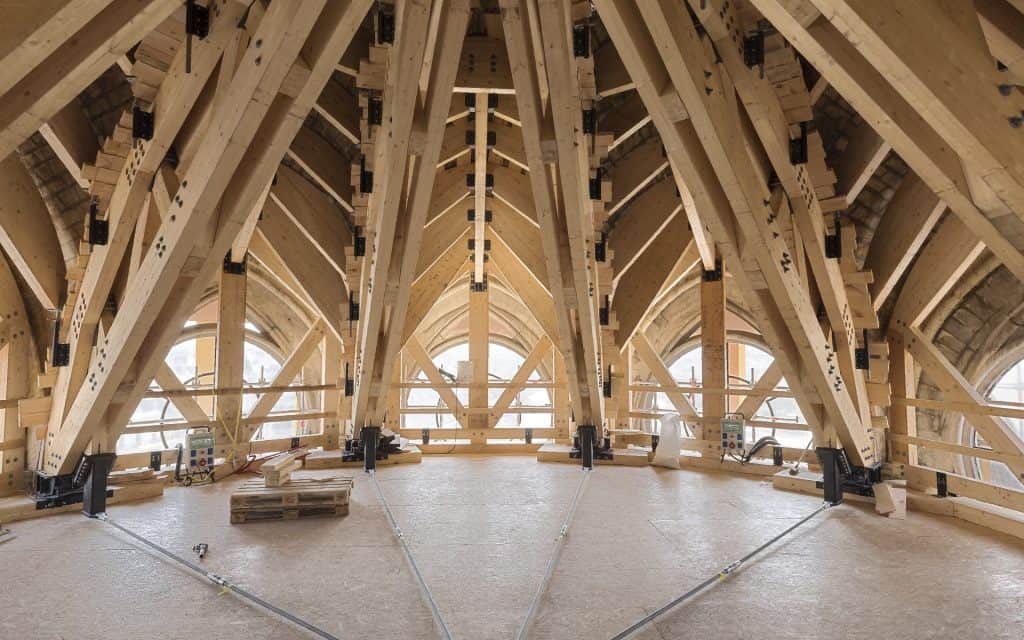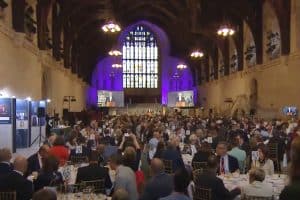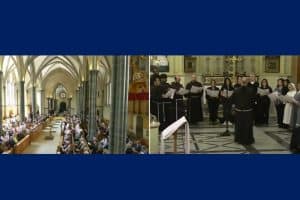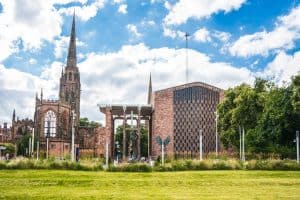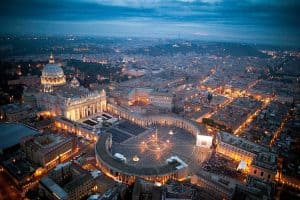By Catherine Pepinster
They are called sister churches. Both are symbols of the capital cities in which they stand and are among the greatest glories of medieval architecture.
Now the link between Westminster Abbey and Notre Dame has been confirmed with the Abbey hosting a huge interactive exhibition into the story of the Paris cathedral, which was decimated by fire five years ago.
Through use of computer technology, the exhibition reminds visitors of how the fire ravaged the great Paris landmark.

At 6.15pm on 15 April, 2019, viewers are told, an alarm was sounded that a fire had been detected in the nave sacristy — “a vague term with disastrous consequences”, because the fire began in the building’s framework under the spire, during renovation work. It meant vital minutes were lost as the flames beneath the spire swept the building.
As thousands of Parisians came out on to the streets, many weeping, and watched the church that epitomises their city succumb to the raging fire, Emmanuel Macron, president of the republic, promised that it would be rebuilt. The drama of the fire, the collapse of the spire and the daring rescue of many precious works of art from Notre Dame’s interior, moved the world.
According to Philippe Jost, president of the public institution responsible for the restoration of Notre Dame — who was in London on Tuesday for the launch of the exhibition — 340,000 people from around the world donated to the cathedral restoration fund.
The cutting-edge technology of the exhibition, Mr Jost said, “enables us to bridge the cathedral’s nearly millennium-old history with the current restoration project”, and to see “the exceptional quality of the craftmanship and expertise at work throughout France contributing to the cathedral’s restoration”.
The Westminster Abbey exhibition, which opens today in its chapter house, took the digital exhibition specialists Histovery two years to create. Visitors are issued with a HistoPad, a portable, touch-screen tablet that acts as a portal via points around the exhibition, which includes historic images of the abbey, photographs of the fire and the restoration work.
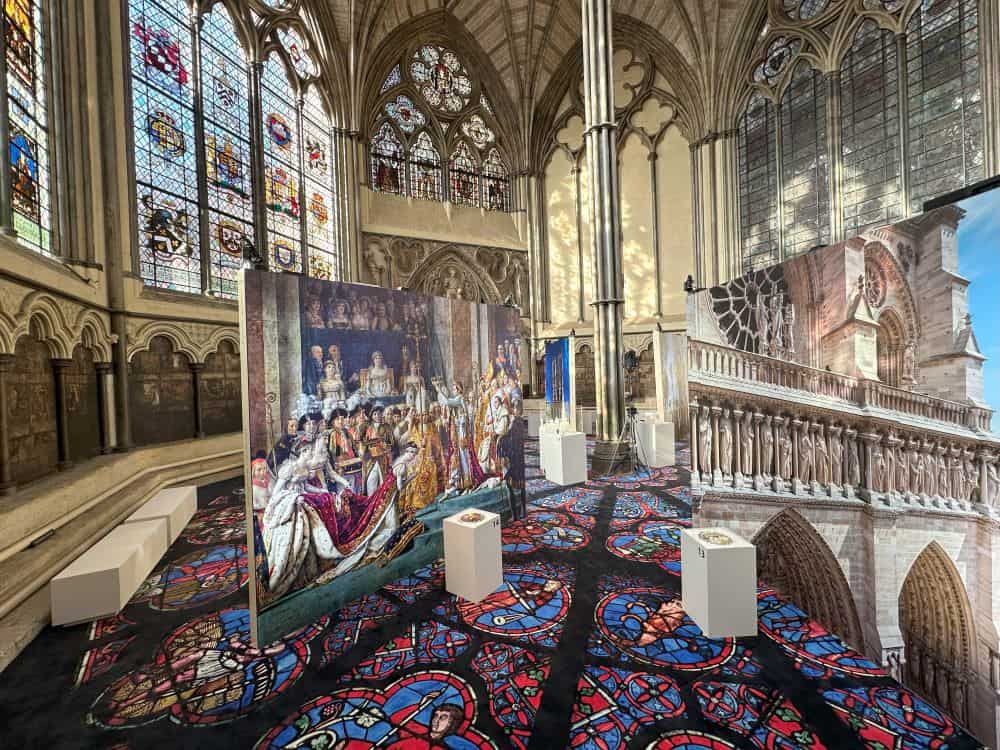
The 3D show begins with the blaze, showing how it spread rapidly through the building, was countered by a giant “colossus” robot with hose and camera sent into the nave, and how the spire — a 19th–century addition to the cathedral — tumbled into the church. The fire was finally put out after 15 hours with not only the spire destroyed but most of the lead-covered wooden roof over the stone vaulted ceiling too.
The interactive show then moves through the chronological history of Notre Dame. Viewers can watch as builders get to work creating the cathedral and look around the Ile de la Cité site in the middle of the Seine in Paris where the new building, replacing a much older, simpler church dedicated to St Etienne, took shape. They can see how the old stones from the previous church were recycled to make the new one; look at the master builder’s plans — his preserved book of documents shows a mastery of construction — and watch as the keystone is hoisted into place as construction continues.
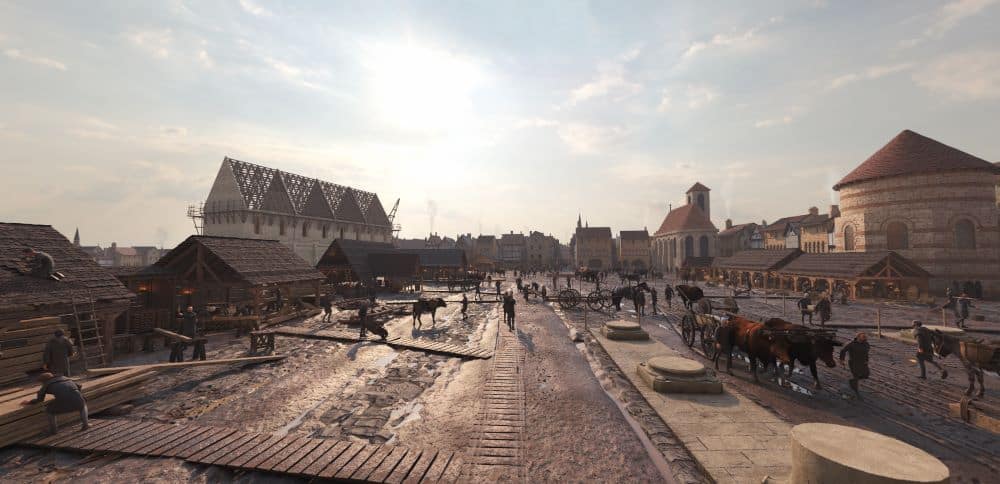
By the time Notre Dame, dedicated to Our Lady of Paris, was completed in 1260, work on the Benedictine Abbey of St Peter — better known today as Westminster Abbey — had been going for 15 years.
The interactive exhibition also takes the visitor through major episodes in Notre Dame’s history, from the lavish wedding of Henry IV of France to the French Revolution and on to the coronation of Napoleon Bonaparte as emperor in 1804.
The revolutionaries of 1789 smashed Notre Dame’s statues, encouraged anti-religious sentiment and, on 10 November 1793, hung a banner over Notre Dame’s frontage declaring it had become a “temple of reason”, where a festival of liberty was held. But Napoleon Bonaparte put an end to the dechristianisation of France.
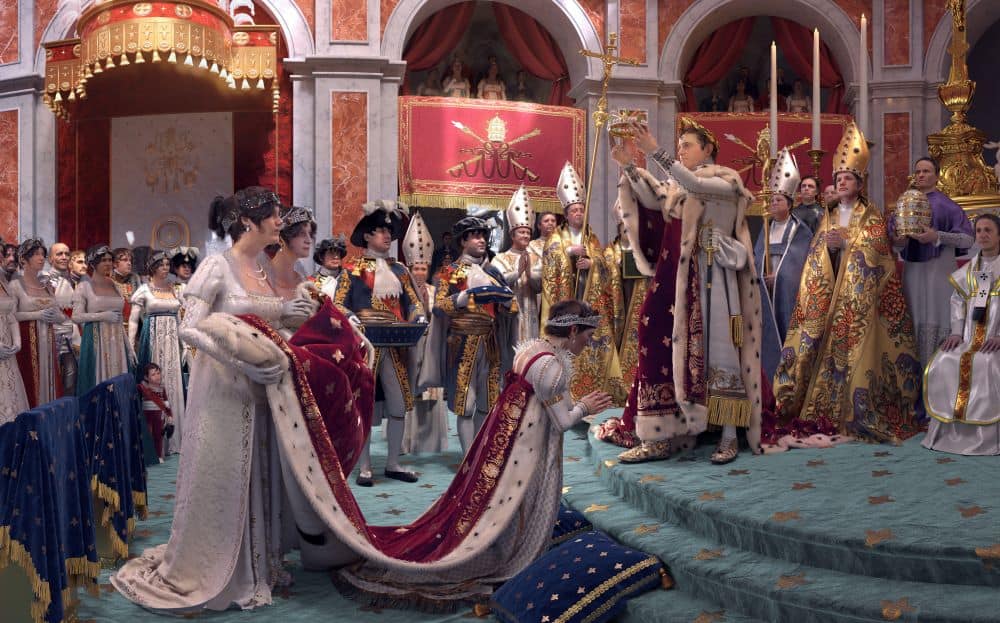
Missing from the London version of the exhibition is a section dedicated to some of Notre Dame’s most famous landmarks: its grotesques.
Also missing is Quasimodo, the famous hunchback who lived in the belfry of Notre Dame: he was a figment of the imagination of the novelist Victor Hugo, who created his story in The Hunchback of Notre-Dame. Hugo may have been inspired to write his gothic tale by the criminals who once found sanctuary in the cathedral and lived in its bell towers.
The exhibition concludes with the last of the rebuilding work, including the raising of an entirely new spire — a 66-metre structure that comprises 110 pieces of oak and 150 highly complex joints. The roof frames and the roof and the masonry have been restored, while other parts of the cathedral such as the stained glass windows have been cleaned and restored so that they will look as they did nearly 900 years ago when they were first installed.
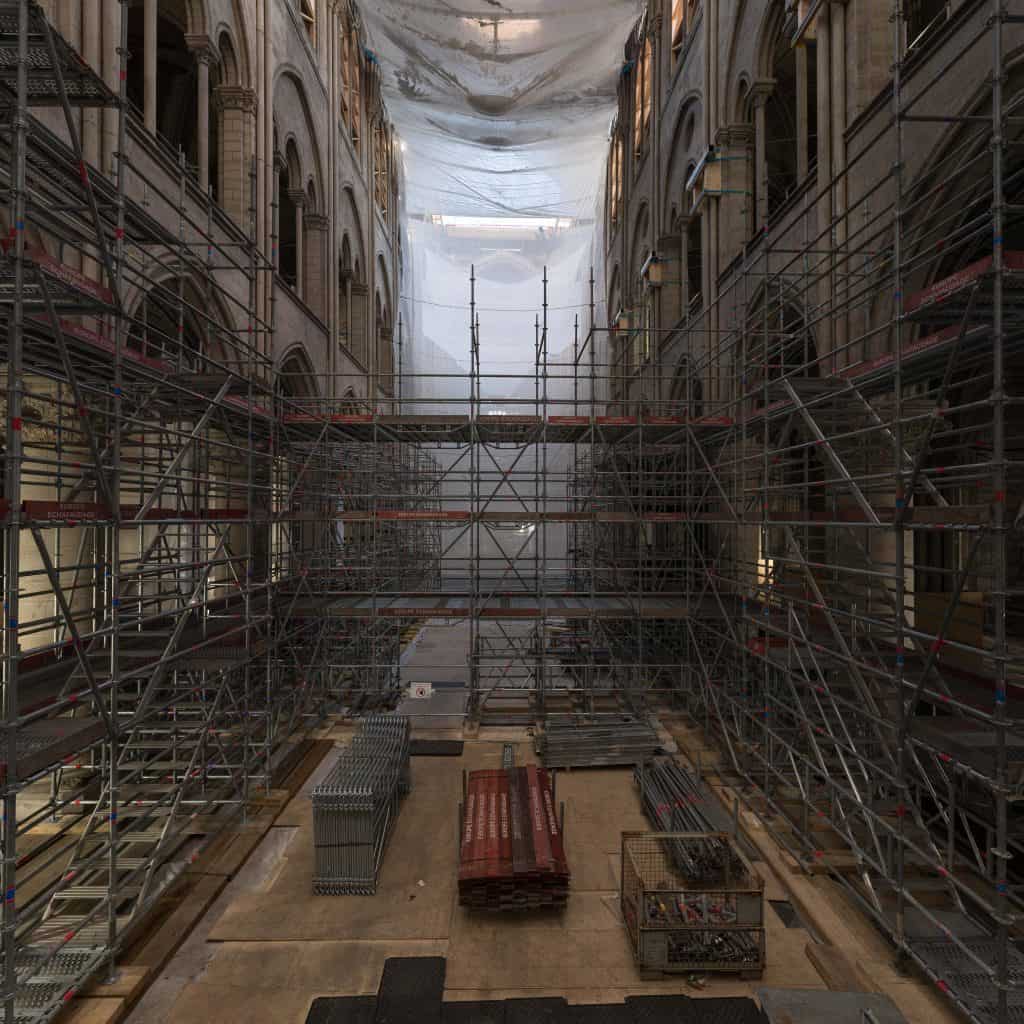
Restorers of the framework of the choir and the nave of the cathedral call it the forest because so many oak trees were used to construct it. One thousand trees were needed to rebuild the church’s 25 trusses, which are vital for the stability of the walls. A similar number of trees were needed for the framework of the spire and the transept.
The exhibition will be a draw for lovers of history and churches but it has also been devised to entertain children with a game embedded in the interactive show, encouraging them to find hidden gems of stained glass.
Bruno de Sa Moreira, co-founder and chief executive of Histovery, says the interactive exhibition will not be available to people to access at home “because there you are constantly distracted. We want people to take time with this exhibition so that they are fully engaged and in a building like Westminster Abbey you have the right ambience. That is very important.”
Notre Dame de Paris will be open to visitors to Westminster Abbey from 7 February to 1 June. The exhibition is part of Fraternité, a spring season celebrating links between Britain and France, and the two churches of Notre Dame and Westminster Abbey. It includes talks, tours and music as well as the exhibition.
The planned date for the reopening of Notre Dame is 8 December, 2024, on the Feast of the Immaculate Conception, dedicated to the Virgin Mary, the cathedral’s patron.

